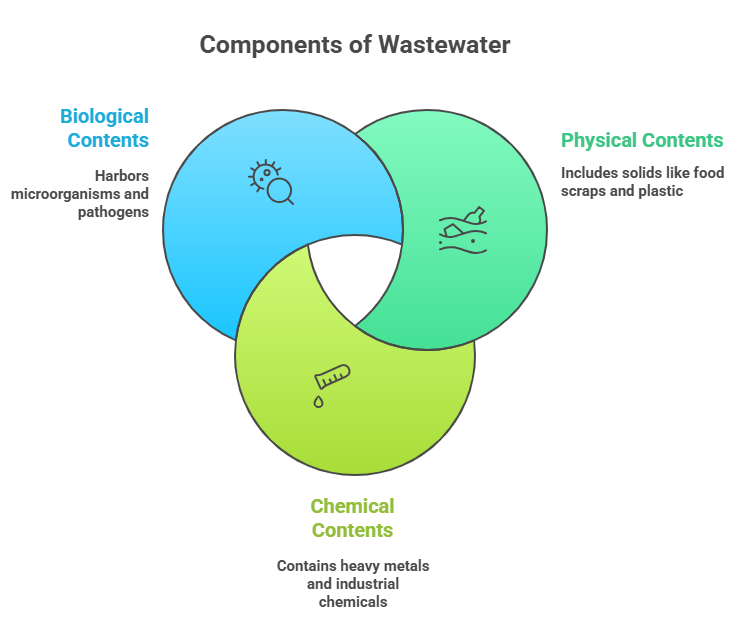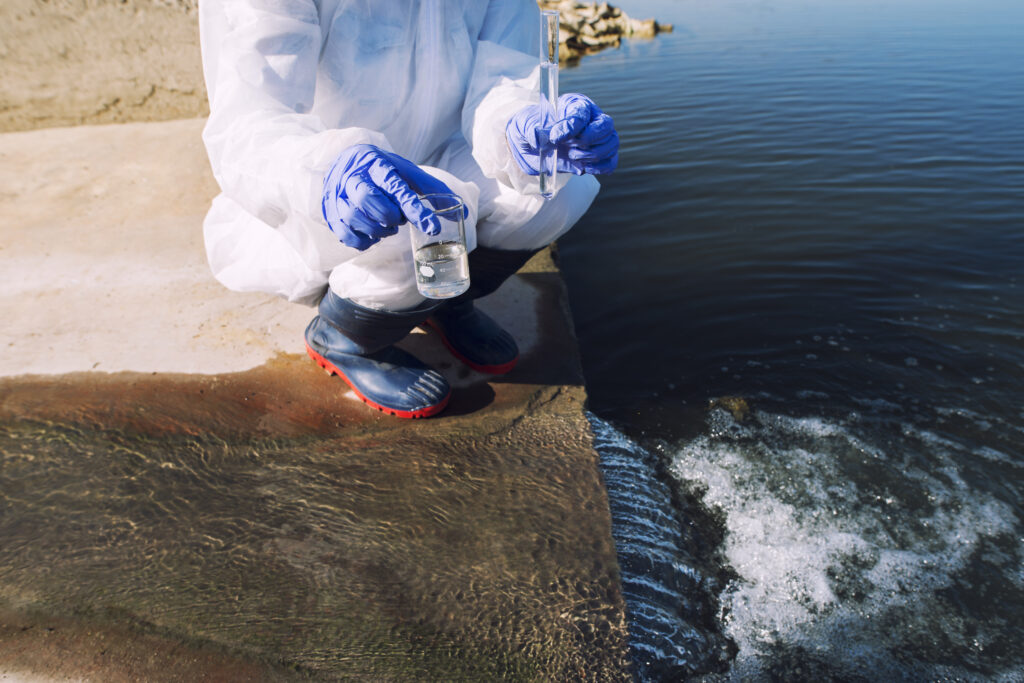Wastewater treatment and recycling are important in water-scarce countries like Australia. It is necessary to protect human health, the environment, and economies. Mismanagement of wastewater also attracts legal penalties. Environmental remediation services can be booked for managing wastewater properly.
What is wastewater? Wastewater is used water that is affected by commercial, domestic, and industrial activities. So, you will find contaminants like chemicals, human waste, and nutrients in wastewater. As the urban population of Australia is rapidly growing, management of wastewater has become crucial. Management of wastewater has also become essential for supporting widespread agriculture and protecting delicate ecosystems.
Understanding Wastewater in the Australian Context
In Australia, wastewater from industries, cities, and regional towns serves as a valuable resource. Such wastewater is particularly valuable in environments with water scarcity. Treatment plants are used for the management of wastewater in Australia. There are over 720 plants for treating wastewater across Australia.
Most of the treated water is released back into the environment. However, the emphasis on recycling is growing. Focus is also placed on treating wastewater for use in non-potable purposes like industrial processes and irrigation. Advanced wastewater treatment systems are also used to recycle for domestic use.
Importance of Wastewater Management in Australia
Here is why wastewater filtration and management are important in Australia.
Water Security
The general climate of Australia is dry and water-scarce. So, recycled wastewater serves as a valuable source of water, especially for non-potable uses. This reduces the dependence on freshwater sources, which enhances water security during periods of drought.
Environmental Protection
The management and treatment of wastewater is necessary to prevent pollution of rivers, lakes, coastal waters, and aquatic ecosystems. Preventing pollution of Australia’s water bodies is also necessary to protect public health.
Resource Recovery
Some treatment plants go beyond water recycling. They are also capable of recovering energy and nutrients. So, the growth of such advanced wastewater recovery plants can promote a circular economy.
Types of Wastewater
In Australia, wastewater can be categorised into the following four types, based on its sources. Here are the types of wastewater you should know about.
| Types | Sources | Contents | Risks |
|---|---|---|---|
| Domestic Sewage | Households (kitchens, bathrooms, laundries, toilets, etc.) | Food waste, detergents, human waste, oils, and microplastics. | Health risks from pathogens, groundwater contamination, and bad odour. |
| Industrial Wastewater | Mining, chemical plants, food processing, textile, and manufacturing industries. | Heavy metals, solvents, oils, organic waste, acids, and alkalis. | Toxic pollution, ecosystem damage, and regulatory fines for non-compliance. |
| Stormwater Runoff | Urban streets, roads, and construction sites. | Litter, oil, grease, chemicals, and sediments. | Flash flooding, contamination of rivers and beaches, and harm to aquatic life. |
| Agricultural Runoff | Farms, cattle stations, irrigation areas. | Fertilisers, pesticides, and animal manure. | Algal blooms, reef nutrient damage, and drinking water source contamination. |
Table: Types of Wastewater in Australia
What’s in Wastewater?
So, what does wastewater contain that makes treatment necessary? Check it out here.
Physical Contents
The physical contents in wastewater are the solids, like food scraps, human waste, plastic, grease, and sand. Wastewater can contain dissolved solids, suspended solids, and floating debris. The contents can make surfaces slippery, while pollutants and pathogens can cause disease and affect water sources.
Chemical Contents
Wastewater can contain a variety of chemicals, depending on the source. The chemical contents can include heavy metals like mercury, lead, and copper. You will also find chemical content like detergents, cleaning agents, industrial solvents, pharma chemicals, paints, and acids in wastewater.
It is also common to find farm chemicals and other inorganic elements like phosphorus and nitrogen. These contaminants damage the ecosystem and also cause severe health issues, including neurological damage, reproductive harm, and cancers.
Biological Contents
Wastewater harbours a variety of microorganisms, including bacteria, protozoa, parasites, and viruses. These microorganisms are capable of decomposing organic matter and often help maintain the clarity of water. However, these microorganisms also pose health risks, especially the strains that are highly concentrated in untreated wastewater.
Without proper wastewater treatment, the pathogens get introduced into drinking water sources, leading to diseases like hepatitis A, cholera, typhoid, and diarrhoea.

Risks of Wastewater Mismanagement
Here are the risks of improper wastewater filtration, treatment, and management.
Public Health Risks
The pathogens in untreated wastewater can introduce harmful pathogens into water sources. This can cause a range of temporary but severe diseases. Exposure to toxic chemicals and heavy metals in untreated wastewater can lead to long-term health issues and chronic conditions. Infections and skin diseases are also common among irrigation workers and farmers.
Environmental Risks
Wastewater can pollute natural water bodies and drinking water sources. It affects lakes, rivers, and even groundwater. The harmful contaminants harm aquatic life. They cause damage to critical ecosystems and biodiverse habitats. For example, the Great Barrier Reef is facing significant damage from nutrients from wastewater ultimately entering the oceans.
The nutrients are also causing eutrophication or algal blooms, which affects the balance of the ecosystem. Moreover, the use of improperly treated wastewater for irrigation leads to soil and crop contamination. It also further spreads toxic heavy metals like lead and cadmium across terrains.
Economic Risks
Untreated wastewater can cause damage to crops and reduce agricultural yields. This increases the chances of needing expensive food recalls. Pollutants from wastewater also kill fish and destroy aquatic habitats. This makes a negative impact on industries dependent on tourism and fishing.
As contaminated water increases the risks of short to long-term health issues, the healthcare system becomes burdened. The cost for the governments as well as individuals increases.
Regulatory Risks
Mismanagement of wastewater can attract legal penalties and fines from the Australian Environmental Protection Agency (EPA). You will also be in non-compliance with state environmental regulations. You may face lawsuits, financial liabilities, and even damage to the reputation of your organisation or municipality.
Wastewater Treatment and Risk Mitigation in Australia
Here is how wastewater risk assessment and mitigation work in Australia. These are the three stages of wastewater treatment followed in Australia.
- Primary Treatment: The large, coarse objects and grit are removed from the wastewater. This is done through screening and sedimentation.
- Secondary Treatment: Biological processes like activated sludge are run. The goal is to break down organic and inorganic matter with microorganisms.
- Tertiary Treatment: The water is further purified for the elimination of residual impurities. Methods like filtration, chemical treatment, UV-disinfection, and chlorination are used for making wastewater safe for discharge or reuse.
Ready For a Professional Wastewater Management Solution?
Wastewater is unavoidable. But you can reduce its harmful impacts on human health, the economy, and the environment through proper wastewater filtration and treatment. In Australia, safely handling wastewater is essential for preventing disease outbreaks, protecting the water bodies and biodiversity, safeguarding agricultural yield, and building resilient water systems for the future.
In a water-scarce nation like Australia, recycling and reuse of wastewater is necessary to support irrigation, industrial processes, and even drinking needs. Mismanagement of wastewater can also attract fines and cause reputation damage. If you want professional assistance with wastewater treatment, reach out to an environmental remediation service provider near you today!
Frequently Asked Questions
Are Wastewater and Sewage the Same?
No, wastewater and sewage are related, but not exactly the same thing. Sewage is a type of wastewater that mainly contains human waste. But wastewater is a broader term that refers to water with any type of contamination resulting from human activities. So, while all sewage is wastewater, not all wastewater is sewage.
Can I Perform Wastewater Treatment Myself in Australia?
No, it is not legal to treat and reuse your household wastewater yourself, especially for domestic applications. Under the current laws, you cannot reuse water sources from Home Sewage Treatment Plants (HSTPs). But you can use treated blackwater and greywater outdoors if sourced from approved systems serviced by authorised technicians.
Can I Find Professionals to Manage Household and Commercial Wastewater in Australia?
Yes, you can hire professionals for managing household as well as commercial wastewater in Australia. There are a number of specialised companies and environmental remediation service providers.
Can Wastewater Be Treated for Safe Drinking?
Yes, you can treat wastewater to make it safe for drinking. This process, powered by advanced technologies, is being increasingly adopted in countries like Australia. Technologies like ultrafiltration, reverse osmosis, ozonation, and advanced oxidation are used to make wastewater drinkable.





